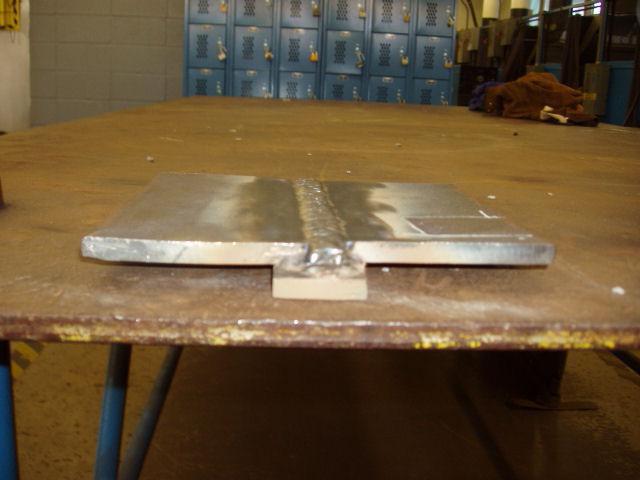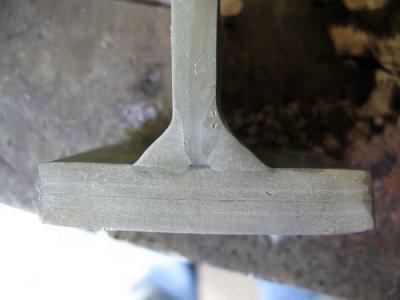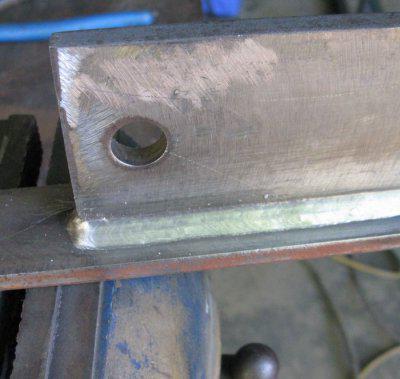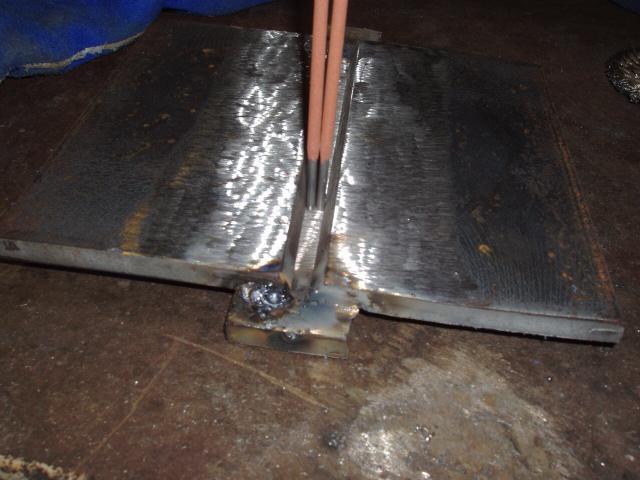Metal welding is used in many industries. The durability of any design depends on how these works are carried out. The quality of welding is affected by how well the type of joint and seam are selected. There are a number of classifications and types of joints. It should consider the main types, elements of welded joints.
Security measures
Welding is a hazardous activity for human health and life. Therefore, the use of personal protective equipment for such work can not do. Welding is accompanied by a number of harmful factors: radiation, gases, molten metal drops. Therefore, the following set of PPE will be required:
- Suit. It is made from tarpaulin fabrics.
- Welder's shoes or boots. In this case, the laces should be closed.
- Glasses, welder mask.
- Welding gas respirator.
- Mittens are tarpaulin.
As you can see, you need a fairly serious set. But it is he who will help protect against burns, loss of vision, poisoning. Therefore, its use is necessary.
Welding Definition
Very often at a construction or production site it is required to connect metal planes and parts in one piece. For this, welding is used, during which a seam is formed. Such a joint becomes one-piece due to the process of fusion of the metal itself and filler materials (electrodes). The main types of welded joints consist of the seam itself, the fusion zone, the heat affected area, and the adjacent material. Parts are joined at the intermolecular or interatomic level under the influence of high temperatures. There are different types of welded joints. GOST 5264-80 contains detailed information about each of them. Below we will consider all this in more detail.
Butt
This species is the most popular. It is used everywhere. Moreover, welding can be carried out with any kind of edges. It can be single-sided and double-sided, with a removable lining, non-removable and without it. It is used for the following edge options: flanging of two parts or one, without it, as well as in the absence of bevel edges. But that is not all. The edge can also be castle, with one-sided and two-sided, symmetric and asymmetric, curved and broken bevels and so on. Butt types of welded joints are diverse and versatile. It is important to observe the technology of work in order to get a high-quality seam.
Corner
This joining of parts is used when working with corner structural elements. Sometimes there is a difficulty with the adhesion of hard-to-reach spots. Therefore, there is some restriction on the edges that need to be joined. Welding can be one-sided and two-sided. It is applied to the following types of edges:
- No bevel.
- Flanging one edge.
- With unilateral and bilateral bevel.
- With a bevel on both edges.
As you can see, a number of connecting elements disappears due to the complexity or inability to fasten them using angular types of welded joints.
Tauride
This type of cutaway looks like a T-shaped connection of parts. But it is also characteristic of parts, at the connection of which a small angle of inclination of one surface to another was used. Welding can be one-sided and two-sided. When working with such a joint, the following row of edges is prepared:
- No bevel.
- With one-sided and two-sided version on one edge. Moreover, they can be symmetrical and asymmetrical.
- With curved unilateral and bilateral bevel of one plane.
Tauri types of welded joints also allow you to work with a limited view of the planes.
Lap and butt connection
The first docking is used in cases when it is required to fasten parts with an overlap. Edges without bevels are preferred by the master, using this type. The type of welded joint, end, is rarely used. But still it is allocated in a separate group. In this way, the end faces of the parts are connected. Remember that for each joint a different type of seam can be applied. For the convenience of working with a table in which all types of welded joints are registered, GOST introduced their letter designation. Each welder should familiarize themselves with their main characteristics.

Seam Classifications
There are several classification options:
- By location relative to the surface - one-sided and two-sided.
- By appointment - workers (operation of welded surfaces under load), non-working (without it).
- In length - short (up to 250 mm), medium (up to 1 m), long (over a meter).
- By configuration - rectilinear, curved.
- In width - thread (the width is equal to the diameter of the electrodes or it is significantly smaller), broadened (obtained by vibrational movements of the electrodes).
The types of welds and joints have several more classifications that should be considered in detail.
By position in space
This classification highlights the following points:
- Lower. The angle of work relative to the horizon is from 0 to 60 °.
- Vertical. The angle relative to the ground is from 60 to 120 °.
- Ceiling. The angle of operation is in the range from 120 to 180 °.
The position in space can affect the quality of the seam, and the choice of the type of joining.
By degree of continuity
The following types of welds and joints are distinguished with this classification: continuous (do not have gaps along their entire length) intermittent (performed with interruptions). The second option is more characteristic for corner and tee joints.  Intermittent, in turn, can be:
Intermittent, in turn, can be:
- Chain, when identical discontinuous chains of seams are made on both sides.
- Chess, when the seams on one and the other side are applied with a shift relative to each other.
- Pointed. Dotted in staggered order from two sides.
Continuous seams withstand heavy loads. They are less susceptible to corrosion, so they are most often used for work surfaces.
By the type of weld obtained
This classification distinguishes the following types of seams:
- Butt.
- Angular. It is used in T-joints, docking, corner joints.
- Smooth. It is characteristic for T-joints and lap joints. Moreover, the thickness of the surfaces should be no more than 10 mm.
- Electro Rivet. Also used for tee and lap joints. First, the first surface is drilled. Through it, they grab the second. If the thickness of the first surface is not more than 3 mm, it is not drilled. Such sheets are punched by welding. Designs are strong, but not tight.
- Butt. They are used to grip the side surfaces of parts (ends).
As you can see, the types of welds and joints are interconnected by such a classification. They even have a number of identical names.
According to sectional profile data
If you cut any butt joint, you can accurately determine the type of seam according to this classification:
- Convex. It is applied to the products experiencing static loading. It is considered reinforced. When performing such a seam, a large number of electrodes are used.
- Concave. It is characteristic for designs with dynamic and alternating load. It is considered weakened.
- Normal. Recommended use, as for concave.
T-shaped and angled types of welded joints imply another kind of weld - special. If we consider it in the context, it will be seen that one of the legs will be larger, i.e., an isosceles triangle is obtained. Used for products with variable load. Reduces stress.
In the direction of efforts
This classification is related to welding technology. So, the seams are:
- Longitudinal. The force is directed along the axis of the seam.
- Transverse. The direction of effort across.
- Combined. Sometimes designs require a combination of several types of effort. For example, both transverse and longitudinal.
- Slanting. The force is applied at an angle.
By the number of layers
There are only two types of seams in the context of this classification: single-layer and multi-layer. In addition, they are single-pass and multi-pass. If everything is clear with the first option, then the second is characterized by the presence of several new definitions:
- Pass. In simple words, this is a one-time passage through the clutch by welding.
- Roller. This is the name of the part of the molten metal obtained in one pass. By the way, the seam layer may consist of one or more rollers made at the same level.
- The root of the seam. This is the farthest roller from the facing level.
A multilayer, multi-pass weld joint type is used to bond thick materials and reduce the heating zone. The same classification identified additional types of welds and joints. GOST designated them as:
- Welding. A smaller part of the preparatory bilateral seam. It is carried out in order to prevent burn through during other levels. Or the last thing is applied to the root of the seam.
- Facing. The name itself speaks for itself. It is performed for the front part of a multi-level seam. Improves the look.
Multi-row seams are usually complex. They require accuracy and professionalism.
Inadmissible errors
Types of welded joints and types of welds should be performed according to technology.  The quality of work is directly related to the further operation of products and structures. When welding, the following errors should not be allowed:
The quality of work is directly related to the further operation of products and structures. When welding, the following errors should not be allowed:
- Undercut, burn through. It is formed during prolonged thermal exposure to one point.
- Lack of penetration. Insufficiently long thermal effect, as a result of which a poorly cleaned base is formed. The design is unreliable.
- Slag inclusions. May appear due to poor-quality electrodes.
- Pores. They are formed as a result of the appearance of splashes of hot metal. Weld temperature should be adjusted.
- Cracks. May appear when docking different types of metal. They may vary in melting point.
- Cavities. Education under the influx of voids. This is fraught with cracking during operation.
- Non-fusion. Reasons: insufficient temperature for welding, poorly cleaned surface, lack of penetration.
All this may further affect the quality of metal structures and products.
Quality control
Welding work requires quality control. There are several ways to implement it:
- Visual inspection It will help to detect visible errors: pores, cracks, slag inclusions.
- Measurement. Using measuring instruments, the seam length and width are monitored. Checks compliance with the terms of reference and GOST.
- Leak test Required for some types of designs. It is checked using special crimping.
- Instrumentation. New technologies have found their application in this area.
- Laboratory research. It is checked by physical and chemical reactions.
Of course, the quality of work depends on the experience and qualifications of the welder himself.  He will easily determine the ability to perform this or that type of work, the compatibility of the material, select the desired joint and seam and perform the work at the proper level. A good welder has always been and will be in value. But this is being studied both theoretically and practically. Some take years to do this.
He will easily determine the ability to perform this or that type of work, the compatibility of the material, select the desired joint and seam and perform the work at the proper level. A good welder has always been and will be in value. But this is being studied both theoretically and practically. Some take years to do this.
Conclusion
As previously stated, welding is a complex technological process that requires professional skills and knowledge. Also, do not forget about personal protective equipment. They will help to avoid burns to the cornea of the eye, which is harmful to the skin by thermal effects.If you want to apply welding to complex structures, it is better to trust a professional.  And all because the reliability of the design itself will depend on the quality of the work done in the future. To gain experience, it is better to start with simple products. At the same time, welding technology and safety precautions must be strictly observed. It should be understood that edge preparation also plays an important role. Therefore, you should thoroughly clean the surface before starting work. Also, at the end of the seam should be cleaned of slag. Sometimes it turns out uneven. This cannot be seen behind the slag layer that remains of the electrode. So, we have found out the main types of welds and joints.
And all because the reliability of the design itself will depend on the quality of the work done in the future. To gain experience, it is better to start with simple products. At the same time, welding technology and safety precautions must be strictly observed. It should be understood that edge preparation also plays an important role. Therefore, you should thoroughly clean the surface before starting work. Also, at the end of the seam should be cleaned of slag. Sometimes it turns out uneven. This cannot be seen behind the slag layer that remains of the electrode. So, we have found out the main types of welds and joints.








